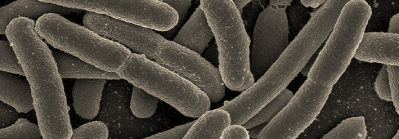E.coli shocked into submission on beef

Scientists from the US found that application of the alternating charge “significantly affected” the presence of E.coli 0157:H7 on the surface of beef samples.
The team from Fort Valley State University, Georgia, and Virginia Tech noted that E.coli contamination is a major foodborne pathogen problem with the bacteria causing 78,000 cases, resulting in an estimated 2,429 hospitalisations and 20 deaths in the US.
As well as the human cost, the authors cite figures from the Centers for Disease Control and Prevention (CDC) which estimates that the cost per case of E.coli is US$14,838.
The study - Efficacy of low-voltage ac for inactivating surface adherent Escherichia coli O157:H7 on beef – was published the academic journal International Journal of Food Safety, Nutrition and Public Health.
Most likely cause
The research reached its conclusions after subjecting beef to varying frequencies and intensities of current for different times.
The 25mm squared samples were placed in a sodium chloride solution, which acted as an electrolyte. AC electric current was applied to the meat at frequencies of 1,10 and 100 kHz and current intensities of 300 mA (15 mA/cm2), 600 mA (30 mA/cm2), and 900 mA (45mA/cm2) for two, either and 16 minutes.
Longer treatment times increases the log reduction of E.coli. The team reported that a 2.15 log10 reduction was achieved using a 16 min treatment time with 900 mA (45 mA/cm2) current intensity and 1 kHz frequency.
The paper noted that the electric current was the “most likely cause” for the tackling E.coli but acknowledged that another factor was a possibility.
Bubbles forming on the anodes during the experiments – particularly at higher current intensities - indicated the potential presence of active chlorine gas.
“It is possible that the formation of this active chlorine gas could be a factor that affected the inactivation of E.coli cells,” said the study.
It added that the Sodium chloride solution – with recognised antimicrobial properties - could also have had an effect, especially where its temperature increased by more than 10C.
But the scientists concluded that overall: “Log reduction of E.coli was significantly affected by current intensity frequency and duration of treatment.”
It added that while the E.coli cells were not completely destroyed, the level of contamination from the initial inoculum at 10₅ cfu/mL were higher than those that would be found on commercial carcasses after slaughter.
They concluded the research had illustrated the potential for the application of low voltage AC current to inactivate E.coli but said more study was needed to clarify the mechanisms that leads to the cell inactivation.
Harris, D.L., Mahapatra, A.K., Jones, B.L., and Kannan, G. (2011) ‘Efficacy of low-voltage ac for inactivating surface adherent Escherichia coli O157:H7 on beef’, Int. J. Food Safety, Nutrition and Public Health, Vol. 4, No. 2/3/4, pp.214-224.


























